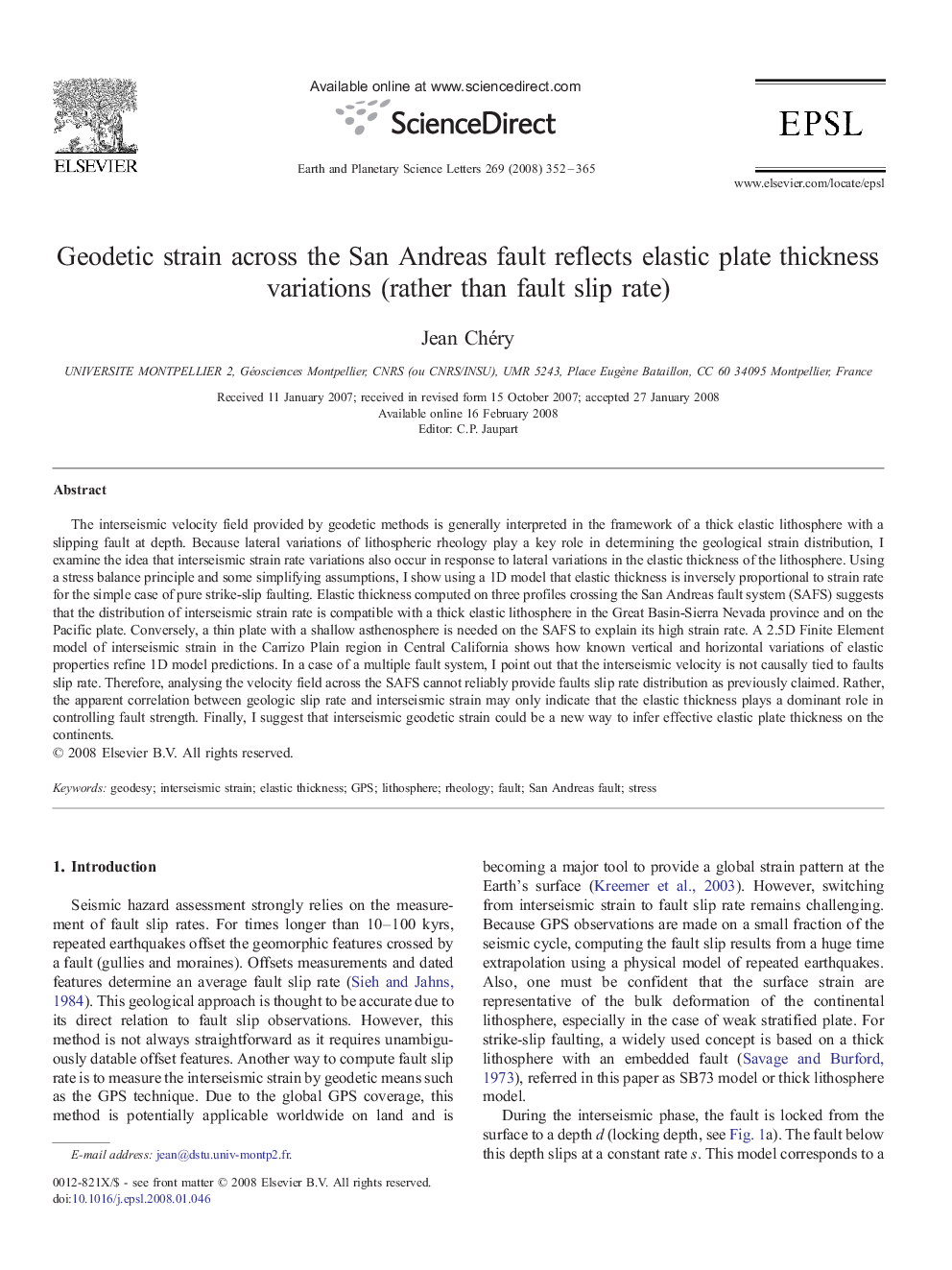| Article ID | Journal | Published Year | Pages | File Type |
|---|---|---|---|---|
| 4679774 | Earth and Planetary Science Letters | 2008 | 14 Pages |
The interseismic velocity field provided by geodetic methods is generally interpreted in the framework of a thick elastic lithosphere with a slipping fault at depth. Because lateral variations of lithospheric rheology play a key role in determining the geological strain distribution, I examine the idea that interseismic strain rate variations also occur in response to lateral variations in the elastic thickness of the lithosphere. Using a stress balance principle and some simplifying assumptions, I show using a 1D model that elastic thickness is inversely proportional to strain rate for the simple case of pure strike-slip faulting. Elastic thickness computed on three profiles crossing the San Andreas fault system (SAFS) suggests that the distribution of interseismic strain rate is compatible with a thick elastic lithosphere in the Great Basin-Sierra Nevada province and on the Pacific plate. Conversely, a thin plate with a shallow asthenosphere is needed on the SAFS to explain its high strain rate. A 2.5D Finite Element model of interseismic strain in the Carrizo Plain region in Central California shows how known vertical and horizontal variations of elastic properties refine 1D model predictions. In a case of a multiple fault system, I point out that the interseismic velocity is not causally tied to faults slip rate. Therefore, analysing the velocity field across the SAFS cannot reliably provide faults slip rate distribution as previously claimed. Rather, the apparent correlation between geologic slip rate and interseismic strain may only indicate that the elastic thickness plays a dominant role in controlling fault strength. Finally, I suggest that interseismic geodetic strain could be a new way to infer effective elastic plate thickness on the continents.
